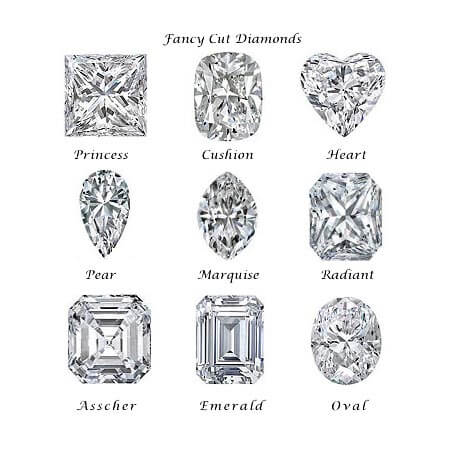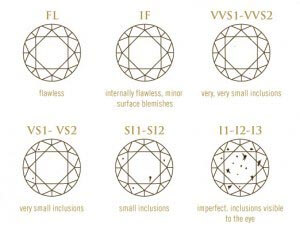How much do you know about diamonds? These precious stones have captured the fancy of the whole world almost immediately after they were first mined in 1867. Diamonds are used to make fine jewelry; they carry an array of symbolic meanings, and are often the preferred center stone in engagement rings. If you go jewelry shopping in the best jewelry stores in San Diego, then you probably know all about the 4 Cs of a diamond and other important properties the store staff must have informed you about.
However, there is a myriad of terms associated with diamonds. Read through and test yourself on your diamond knowledge!
As one of the 4Cs, cut is an extremely important property of a diamond. The name refers to the proportions and finish of a polished diamond. It’s important to note that cut is a man-made contribution to a diamond’s properties, and is not inherent in a diamond.
Facets are smooth and flat faces on a diamond’s surface, through which light enters a diamond and reflects off its surface.
Fancy cuts are all diamonds cuts besides round.

The table is the flat facet on top of the diamond. It’s the largest facet on a cut diamond.
The girdle is the outer edge of a diamond’s shape. It is described by its thickness as extremely thin, thin, medium, slightly thick, thick, extremely thick. Extremely thin or extremely think girdles are undesirable in round diamonds. The girdle is especially important because it’s where the jewelry setting holds the diamond.
The upper portion of a cut gemstone is called the crown. It lies just above the girdle, and consists of the table facet surrounded either by the star and bezel facets (on round and most fancy diamond cuts) or concentric rows of facets (on emerald cuts).
The portion below the girdle is called the pavilion. In essence, it’s the lower portion of a diamond.
The culet is a small flat facet sometimes added to the bottom of the pavilion. Its primary function is to prevent the tip of the diamond’s pavilion getting chipped or otherwise damaged. Culets on modern-shaped diamonds are very small.
Brilliance is an essential property of a diamond. In essence, brilliance is bright light reflected up through the top of a diamond. This property consists of two components: brightness and contrast. Brilliance is often seen as brightness coming from the heart of the diamond. It’s formed when light enters the diamond through the table, reaches the lower pavilion facets, and is reflected from those facets back up and out through the table.
Brilliance is not the same as scintillation.
Facets can be arranged in three styles, with brilliant cut being one of them. The facets of a brilliant cut diamond seem to radiate out from the center of the diamond toward the outer edges. This specific arrangement of 58 facets (including the culet) was mathematically calculated to achieve maximum brilliance, hence the name of the cut.
In essence, fire is the dispersed light that appears as flashes of rainbow colors. The colored light flashes are reflected from within a diamond. More fire is produced on diamonds with steep crown angles and small tables. Diamonds can seem to have more fire in darker places with only a few light sources such as flickering candles.
As a diamond, a person watching it or the light source moves, the diamond gives off intense sparkles called scintillation. Essentially, scintillation looks like flashes of white light mixed with hints of dark. In layman terms, scintillation is synonymous with sparkle.
Blemishes are one of the clarity characteristics of a diamond. As you probably know, clarity is also one of the 4Cs. Blemishes occur on a diamond’s surface. They are mostly formed as a result of the diamond’s interaction with the environment it was exposed to after being unearthed. In some cases, like with the original round diamond, blemishes are inherent characteristics of a diamond.

Just like blemishes, inclusions are also part of a diamond’s clarity characteristics. Unlike blemishes, however, they are found within a diamond and are formed before the diamond is unearthed.
This is an adjective coined by the jewelers, describing a diamond that has no blemishes or inclusions that can be seen with the naked eye.
Leo Hamel Fine Jewelry & Engagement Ring Store boasts an incredible staff of Graduate Gemologists and seasoned jewelers. We are here to answer all your questions and guide you towards the diamond jewelry purchase that is right for your tastes and budget. Visit us on San Diego Avenue and let us know how we can be of service!